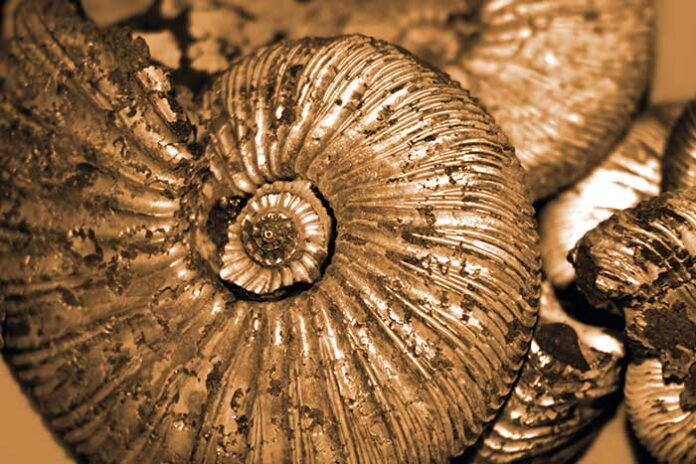ນັກທໍລະນີສາດໄດ້ຫມາຍໄລຍະໃຫມ່ໃນປະຫວັດສາດຂອງໂລກຫຼັງຈາກຄົ້ນພົບຫຼັກຖານໃນ Meghalaya, ປະເທດອິນເດຍ
The current age which we are living in has been recently officially designated at the ‘Meghalayan Age’ by the International Geologic Time scale. This scale divides the history of our ດາວ into different eons, eras, periods, epochs and ages. The timing of events on the basis of which these time periods are divided is collated by geologists and archaeologists worldwide and is based upon substantial events like continents breaking up, dramatic change in climatic conditions, extinction or emergence of certain animals and plants. The units of this scale are based upon proof and evidence of sedimentary layers which have collected over time and these layers contain different sediments, fossils and chemical isotopes. Such strata bear recordings through a passage of time which also convey associated physical and biological events. This is called geologic age dating where each of such material are assigned an age and then the likely events around it are predicted. This is how we know today that earth is 4.6 billion years old. The International Commission on Stratigraphy (IUGS) is chiefly responsible for regulating the Geologic Time Scale.
ຍຸກປະຈຸບັນທີ່ພວກເຮົາອາໄສຢູ່, - ຍຸກ Holocene - ໄດ້ຖືກປັບປຸງແລະແບ່ງອອກເປັນສາມໃຫມ່. ອາຍຸທາງທໍລະນີສາດ ເຊິ່ງແມ່ນ Early Holocene ເອີ້ນວ່າ Greenlandian, Middle Halocene ເອີ້ນວ່າ Northgrippian ແລະ Late Halocene ເອີ້ນວ່າ Meghlayan age. ອາຍຸຂອງ Greenlandian ແມ່ນໝາຍເຖິງເມື່ອຍຸກນ້ຳກ້ອນໄດ້ສິ້ນສຸດລົງ ແລະ ຄວາມອົບອຸ່ນຂຶ້ນເທິງແຜ່ນດິນໂລກປະມານ 12000 ປີກ່ອນ. ອາຍຸ Northgrippian ເລີ່ມຕົ້ນປະມານ 8000 ປີກ່ອນ. ທັງສອງອາຍຸເຫຼົ່ານີ້ຖືກຫມາຍໂດຍແກນກ້ອນທີ່ພົບເຫັນຢູ່ໃນ Greenland. ອາຍຸ Meghalayan ທີ່ແຕກຕ່າງກັນທີ່ໄດ້ຖືກລະບຸໃນປັດຈຸບັນໄດ້ເລີ່ມຕົ້ນ 4,200 ປີກ່ອນແລະມາຮອດມື້ນີ້. ອົງການ International Union of Geological Sciences ຮັບຜິດຊອບຕໍ່ມາດຕະຖານສາກົນດ້ານທໍລະນີສາດ. ການຄົ້ນຄວ້າໄດ້ໃຊ້ເວລາເຖິງແປດປີເພື່ອຫມາຍວັນທີສໍາລັບອາຍຸ Meghalayan.
All ages have been assigned unique names based upon their origin or start. The Greenlandian and Northgrippian ages are named for the NorthGRIP site in Greenland. This site depicts the swift warming of the ດາວ signifying the culmination of ice age followed by a swift universal cooling at the start of Northgrippian age which was caused by entry of melted ice water into the North Atlantic. Further, around 4,200 years ago, a significantly drier phase or aridification has been identified by researchers which they have designated as the start of Meghlayan Age. The Meghalayan age is termed after a stalagmite (a type of rock formation) in Mawmlul cave located in the north eastern state Meghalaya in India to mark the exact origin of this age. The word “Meghalaya' ຫມາຍຄວາມວ່າ "ທີ່ຢູ່ຂອງເມກ" ໃນພາສາສັນສະກິດ. ໄລຍະເວລາຂອງຍຸກນີ້ແມ່ນເຂົ້າໃຈໄດ້ໂດຍການອະທິບາຍວ່າ stalagmite ນີ້ໄດ້ຖືກຝາກໄວ້ເທິງພື້ນຂອງຖ້ໍາຈາກເງິນຝາກແຮ່ທາດໃນໄລຍະຫຼາຍພັນປີເນື່ອງຈາກວ່ານ້ໍາຝົນໄດ້ຊຶມເຂົ້າໄປໃນຖ້ໍາໂດຍຜ່ານການ drippings ເພດານ. ອັນນີ້ເກີດຂຶ້ນສ່ວນຫຼາຍອາດຈະເປັນຍ້ອນການປ່ຽນຂອງມະຫາສະໝຸດ ແລະ ການໄຫຼວຽນຂອງບັນຍາກາດ. ຊັ້ນແຮ່ທາດພັນລະນາເຖິງການປ່ຽນແປງຂອງຝົນຕົກຕາມການເວລາເນື່ອງຈາກລາຍເຊັນທາງເຄມີຂອງພວກມັນສະແດງໃຫ້ເຫັນວ່າການປ່ຽນແປງຂອງ stalagmite ດຽວໃນ isotopes ອະຕອມອົກຊີເຮັດໃຫ້ພື້ນທີ່ປະສົບກັບຝົນຕົກ 20-30 ສ່ວນຮ້ອຍ. ນີ້ໄດ້ຖືກພິຈາລະນາເປັນຫຼັກຖານທີ່ສໍາຄັນສໍາລັບການຄົ້ນພົບນີ້. ໃນຄວາມເປັນຈິງ, ຫຼັກຖານດັ່ງກ່າວໄດ້ຖືກຄົ້ນພົບຢູ່ໃນທັງ 200 ທະວີບໃນໂລກ. ນີ້ 'daught ຂະຫນາດໃຫຍ່' ໄດ້ເປີດຕົວອາຍຸທາງທໍລະນີສາດໃຫມ່. ສະພາບດິນຟ້າອາກາດທີ່ຮ້າຍແຮງດັ່ງກ່າວຍັງຈະເຮັດໃຫ້ອາລະຍະທຳພັງທະລາຍລົງ ແລະ ການຕັ້ງຖິ່ນຖານຂອງມະນຸດ ໂດຍສະເພາະແມ່ນບັນດາອາຊີບກະສິກຳໃກ້ທະເລ Mediterranean, ຕາເວັນອອກກາງ ແລະ ອາຊີຕາເວັນອອກກາງ. ຜົນກະທົບຂອງ 'daughter ຂະຫນາດໃຫຍ່' ນີ້ປະກົດວ່າໄດ້ແກ່ຍາວເຖິງຫຼາຍກວ່າ XNUMX ປີ. ຜູ້ຊ່ຽວຊານຫຼາຍຄົນເຊື່ອວ່າເຫດການນີ້ຈະເຊື່ອມໂຍງຢ່າງຫຼວງຫຼາຍກັບເຫດຜົນທາງສັງຄົມແລະເສດຖະກິດ.
The smallest global climatic event in the history of our ດາວ has been discovered for the first time and it furthers our understanding of Earth’s complete geological history. This is a remarkable discovery and an addition into the history of Holocene and also archaeology. Geologists are planning to add a new epoch after the Holocene which is being called the Anthropocene which would mark the impact of humans on the geology of the ດາວ after industrialization.
***
{ທ່ານສາມາດອ່ານເອກະສານການຄົ້ນຄວ້າຕົ້ນສະບັບໄດ້ໂດຍການຄລິກທີ່ລິ້ງ DOI ທີ່ໃຫ້ໄວ້ຂ້າງລຸ່ມນີ້ໃນລາຍຊື່ແຫຼ່ງທີ່ອ້າງອີງ}
ແຫຼ່ງຂໍ້ມູນ (s)
ຄະນະກໍາມະການສາກົນກ່ຽວກັບຍຸດທະສາດ. www.stratigraphy.org. [ເຂົ້າເຖິງ 5 Aug 2018].
***






































